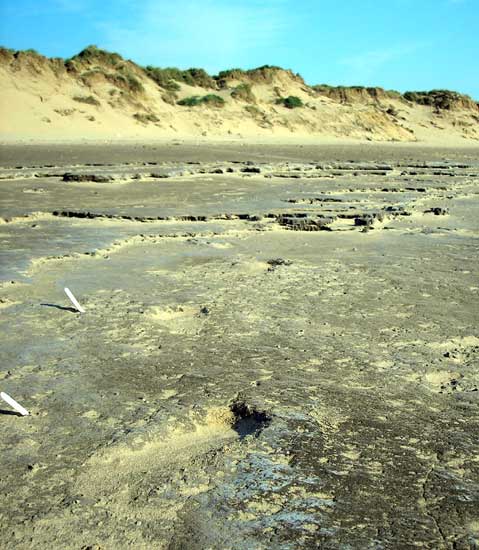
The Folkton Drums on display in the British Museum

The Folkton Drums on display in the British Museum

A sign affixed to the wooden fence directly in front of the main panel

Ten feet of red sandstone

Two upright slabs at right angles remain standing next to the Moss Farm farm track

Just two stones remain of this stone circle; one standing, one fallen

The last one standing. 2.9m high

This could be the recumbent or, more probably, a fallen stone. It’s 3.6m long

Recumbent and flankers behind an electrified fence

Perched on a slope next to a track through Clune Wood

Early morning rainbow over Salisbury as seen from within Figsbury Ring

West Kennett Long Barrow and Silbury Hill from Harestone Down

Standing on a bank between two of the three ditches

The barrow has lost some tarmac and gained a bench since heptangle’s visit

Amongst the large display of artefacts from Hunsbury Hill in Northampton Museum I was astonished to see these Iron Age pottery pieces apparently marked with yin-yang designs.

The unmolestable virgin’s teat peeped at through the nearest roadside hedge

Standing on Ponter’s Ball, looking north towards its crossing of the A361

The 15:10 Glasgow to London Euston Virgin Express passes directly over Kemp Howe stone circle

A portion of exposed drystone walling on the north eastern bank

Large stones near the base of the steep bank

Looking east at the north-western side

Round Loaf bowl barrow in October, from Hurst Hill

The fallen Bulford Standing Stone

Students from Manchester University excavating test pits near to Fargo Plantation as part of the Stonehenge Riverside Project. Part of the southern bank and ditch of the cursus can be seen just beyond them.

There are dozens of small stones set within the area shown in this image

The standing stone has fallen onto one of the stones in the rows

The cairn

The first example of prehistoric cave art to have been re-discovered in the UK. Engraved on this panel is a stag, looking left. If you can’t make it out amongst the modern graffiti, then check out the black outline in the next photo. Note the vertical lines engraved into the bottom of the panel.

Prehistoric footprints on the foreshore at Formby Point

There are four sedimentary layers overlying the stratum containing the footprints

Animal prints in the same sedimentary layer as the human tracks

Two sets of human footprints. Those at the top righthand corner head towards the sea; exiting at bottom left is a group coming away from the sea.

Low tide at Formby Point. The sea is a couple of hundred metres out from the prints (in the foreground). Just beyond you can see some tyre tracks. Two Land Rovers drove past and could easily have destroyed the impressions in the less than rock-hard sedimentary layer.

The prints are only twenty metres out from the sand dunes at the top of the beach

Stone A detail